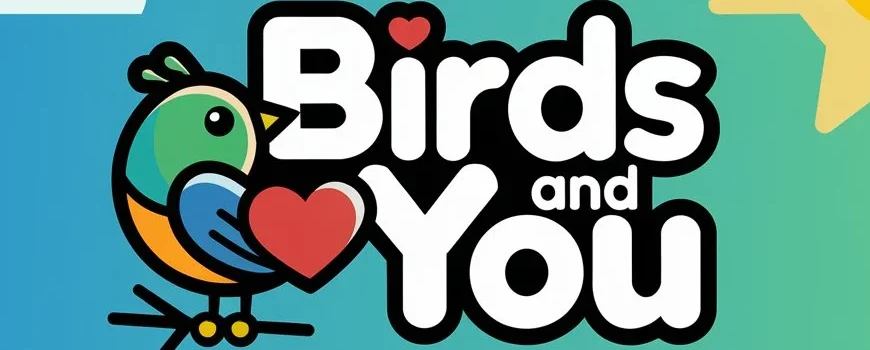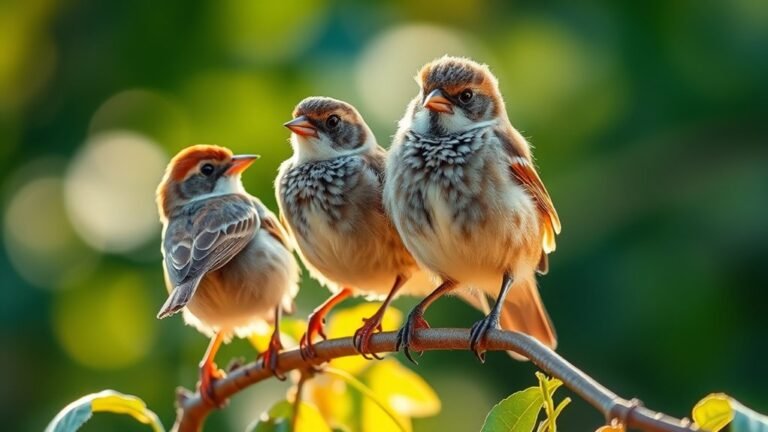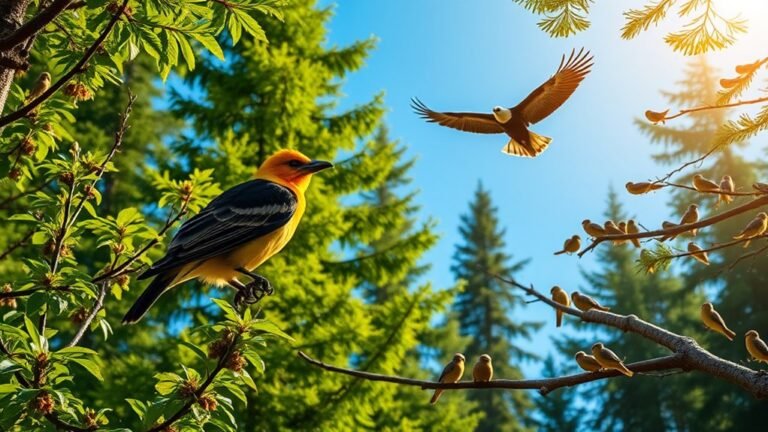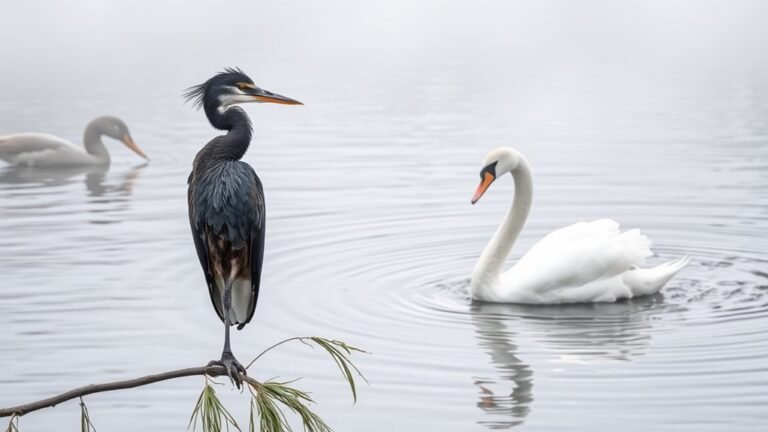Birdwatching in Indiana: Notable Species
Birdwatching in Indiana is exciting! You can see many different birds there. Some of the most famous ones are the American Robin and the Barn Owl. Each bird has special features and behaviors that make them interesting to watch.
Learning about these birds can help you see how they fit into nature. You might be surprised by where they live and how they interact with each other.
Grab your binoculars and get ready to discover the wonderful world of Indiana's birds! Happy birdwatching!
A Quick Overview
- The American Robin has a bright orange breast. You can often see it in Indiana's gardens and fields. Its cheerful song makes the outdoors feel bright and lively.
- Eastern Bluebirds stand out with their vivid blue feathers. They love open fields and gardens. Many people see them as a sign of hope in nature.
- Red-tailed Hawks are great hunters. You can spot them soaring high in the sky. They dive down to catch their food in Indiana's beautiful landscapes.
- The Barn Owl is special for its silent flight. It's a unique bird to watch at night. It has interesting hunting skills that make it fun to see.
- Indigo Buntings are bright blue birds. You can see them best in the summer, especially in open spaces and low shrubs.
The American Robin: Indiana's State Bird

The American Robin is Indiana's state bird. It has a bright orange breast and makes a happy song. You can see robins in many places, like gardens and fields. They like spots with plenty of trees for safety and building nests.
Robins are fun to watch. They're often out early in the morning, hopping around yards looking for worms and berries. Sometimes, you'll see them foraging in groups. This makes the scene lively and exciting.
Learning about where robins like to live and what they do can help you enjoy birdwatching even more.
Seeing these charming birds is a great way to appreciate Indiana's natural beauty.
The Eastern Bluebird: A Symbol of Hope
The Eastern Bluebird is a bright and cheerful bird that brings hope to many people. With its stunning blue feathers, it delights birdwatchers all across Indiana. You can find these beautiful birds in open fields, gardens, and near woods. These places are perfect for watching them as they show off their lively behavior.
Eastern Bluebirds are small thrushes known for their fun social interactions. Males often sing to attract female bluebirds, showing off their courtship skills. They make nests in holes left by woodpeckers or in man-made boxes. This nesting behavior connects them to local conservation efforts. Many communities work together to help these birds thrive.
When you see an Eastern Bluebird, you not only enjoy its beauty, but you also feel a sense of hope. Their presence reminds us of nature's strength and resilience.
The Red-tailed Hawk: Majestic Raptor of the Skies

Seeing a Red-tailed Hawk can make birdwatching in Indiana even more exciting. These stunning birds are great hunters. They fly high in the sky and then dive down to catch small animals or birds. Their sharp eyes help them find food from far away. This makes them skilled hunters in Indiana's fields and forests.
Red-tailed Hawks build big nests in tall trees or on cliffs. They often come back to the same nests each year and fix them up for the new season.
Watching how they live can make your birdwatching more interesting. It helps you feel more connected to Indiana's wildlife. Take a moment to enjoy these amazing birds in their natural home.
The Barn Owl: A Silent Hunter
The Barn Owl is a beautiful and mysterious bird in Indiana. It lights up the night sky with its unique look and interesting habits. Many people who love nature and birdwatching find this owl very special.
One cool thing about Barn Owls is how they hunt. They can fly silently, which helps them catch their food without being heard. Their wings are shaped in a way that reduces noise, so they can sneak up on their prey easily.
While watching these amazing birds, you might notice how well they hear. Their ears help them find sounds, even when it's dark.
Whether they're sitting on a post or flying over fields, Barn Owls show us how beauty and skill work together in Indiana's nature.
The Painted Bunting: A Burst of Color

In Indiana, as night turns into day, you can see a colorful bird called the Painted Bunting. This bird likes open places like weedy fields and brushy areas. The male Painted Bunting has bright colors like turquoise, green, and red. It looks stunning and grabs your attention.
During breeding season, these birds show off their beautiful feathers, which makes birdwatchers happy. They eat seeds, insects, and berries, showing they can live in different areas.
Watching them in nature helps you feel closer to the environment. So, grab your binoculars! Spotting a Painted Bunting will give you a great memory to cherish on your birdwatching trips in Indiana.
The Sandhill Crane: Graceful Migrants
Every spring and fall, thousands of Sandhill Cranes fly through Indiana. Birdwatchers come to see these beautiful birds in nature. The cranes follow specific paths and stop at important wetlands to rest and eat. These wetlands offer food like grains and small water creatures that help the birds stay strong.
Watching Sandhill Cranes in Indiana is special. You can see their large wings and graceful movements. During migration, they gather in big groups, filling the sky with their loud calls.
Places like the Jasper-Pulaski Fish and Wildlife Area are great spots to watch them. Here, you can meet other birdwatchers who also enjoy the beauty of nature. Watching Sandhill Cranes is a fun and exciting experience that brings people together.
The Great Blue Heron: A Master of Stillness
The Great Blue Heron is a bird you can find in Indiana's wetlands. It has a tall and elegant shape that makes it easy to recognize.
These birds are great at being patient. You'll often see them standing very still, waiting to spot fish or frogs in the water.
When they see something to catch, they act fast! They quickly stretch their long necks to grab their meal. This unique combination of standing still and then moving quickly shows how skilled they are.
You can find Great Blue Herons in many places, like shallow marshes or calm lakes.
When you see one, it can help you appreciate Indiana's wildlife and the balance in nature. Watching them can be a peaceful experience and a fun way to connect with the outdoors.
The Ruby-throated Hummingbird: Nature's Tiny Marvel
Ruby-throated Hummingbirds are tiny birds that bring color and joy to gardens and woodlands in Indiana. They buzz from flower to flower, and they play an important role in nature, especially when it comes to feeding.
Let's learn more about these amazing birds and what they do:
- Migration Timing: Ruby-throated Hummingbirds arrive in Indiana around mid-April. They show up just as the spring flowers start to bloom, ready to feast.
- Feeding Preferences: These little birds love tubular flowers for nectar. Their favorites include trumpet vine and bee balm.
- Nesting Habits: Female hummingbirds build nests high up on tree branches. They use spider silk to make the nests strong and flexible, keeping their eggs safe.
Ruby-throated Hummingbirds aren't just beautiful to watch; they help pollinate flowers and keep our gardens healthy.
Enjoy spotting them as they fly around!
The Pileated Woodpecker: The Largest Woodpecker in Indiana
The Pileated Woodpecker is Indiana's largest woodpecker, and it sure knows how to grab your attention! These birds love to live in mature forests where there are lots of big trees. They need that space to build their nests and look for food.
What do they eat? Their favorite snacks are ants, beetles, and termites. They use their strong, chisel-like bills to dig these tasty treats out from under the bark of trees.
If you're walking in the woods, you might hear their loud, rhythmic drumming. This sound is a clue that they're nearby, making it easier for birdwatchers to find them.
If you see a Pileated Woodpecker, take a moment to appreciate its impressive size and bright red crest. Watching these beautiful birds can help you learn more about the wildlife around you. Enjoy your time outside and keep an eye out for this special woodpecker!
The Northern Cardinal: Year-Round Brightness
While exploring Indiana's different habitats, you might see the Northern Cardinal. This bird is famous for its bright red feathers and unique crest. It adds color to your surroundings all year long.
Here are three interesting things about how Northern Cardinals behave and where they live:
- Territorial Commands: Male Northern Cardinals are loud. They make strong calls and show off their size to keep other birds away from their area, especially during mating season.
- Food Choices: These birds enjoy eating seeds, fruits, and insects. You can often find them in gardens, brushy areas, and woods. They're very good at finding food in different places.
- Family Ties: Cardinals like to stick together. They form strong pairs and often search for food side by side. Watching them in your backyard can feel like seeing a little community having fun.
Enjoy watching these beautiful birds!
The Indigo Bunting: A Stunning Summer Visitor
The Indigo Bunting is a small bird known for its bright blue color that lights up Indiana's summer. Many people love to watch this beautiful bird because of its colorful feathers and sweet song, especially during the mating season.
If you want to spot an Indigo Bunting, look in areas with open spaces, shrubs, and small trees. These places are where the birds like to build their nests. They usually choose low to mid-height shrubs to hide their nests, which they make from grass and plant fibers.
During the breeding season, male Indigo Buntings sing loud and clear to attract females and protect their territory.
Watching these activities is fun for birdwatchers and helps them feel connected to nature.
Frequently Asked Questions
What Equipment Do I Need for Birdwatching in Indiana?
To enjoy birdwatching in Indiana, you'll need a few important things. First, get a good pair of binoculars. You can choose small ones that are easy to carry or bigger ones that show more detail.
Next, think about what you wear. Pick clothes that are comfortable and can handle different weather. Don't forget sturdy shoes! These help you walk through different places where birds like to hang out.
With these basics, you'll be ready to explore Indiana's beautiful outdoors and see some amazing birds!
When Is the Best Time for Birdwatching in Indiana?
The best time for birdwatching in Indiana is during spring and fall. Many birds travel during these seasons, making it a great time to see them. In spring, birds return as they come back from warmer places. In fall, they leave for warmer areas. You can enjoy watching these beautiful birds and connect with other people who love birdwatching. Get outside and have fun with nature!
Are There Guided Birdwatching Tours Available in Indiana?
Yes, there are guided birdwatching tours in Indiana. Local experts lead these tours. They share fun facts about the different birds you can see. You get to learn more about birdwatching and meet other bird lovers. It's a great way to enjoy nature and see some amazing birds!
How Can I Attract Birds to My Backyard in Indiana?
To attract birds to your backyard, start by putting up bird feeders. Fill them with seeds that birds love. You can also plant native plants. These plants provide food and shelter for birds. When you have both feeders and plants, birds will feel welcome and come to visit your yard more often. Enjoy watching them!
Is Birdwatching Legal in All Indiana State Parks?
Yes, you can go birdwatching in all Indiana state parks. It's a fun way to enjoy nature! Just make sure to check the rules for birdwatching in each park. This way, you can follow any guidelines and respect the environment. Happy birdwatching!
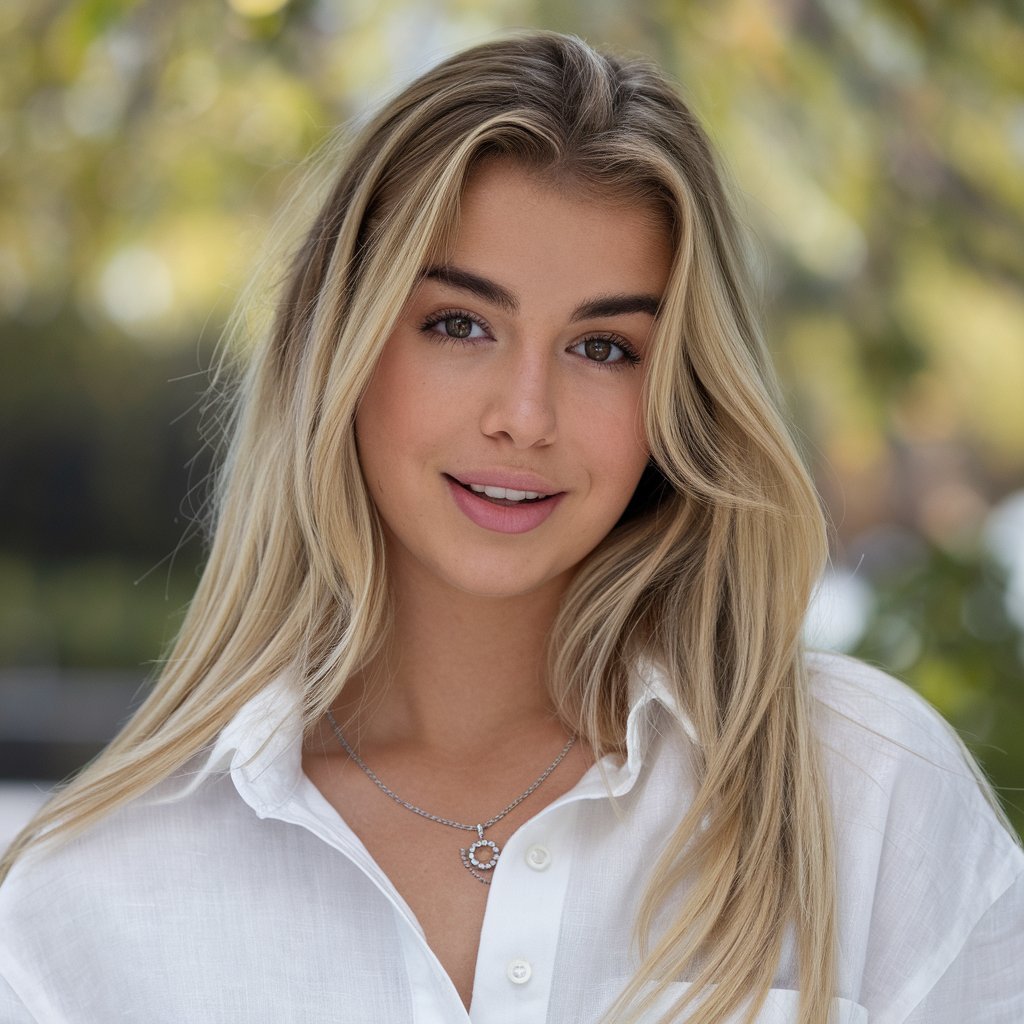
Luna is the passionate founder and author of Birds and You, a website dedicated to sharing her love for birds with fellow enthusiasts. Through her engaging articles and guides, she aims to educate and inspire others to explore the fascinating world of birds. When she’s not writing, you can find Luna observing birds in their natural habitats or sharing beautiful bird photography on Pinterest. Join her on this journey to celebrate and protect our feathered friends!
